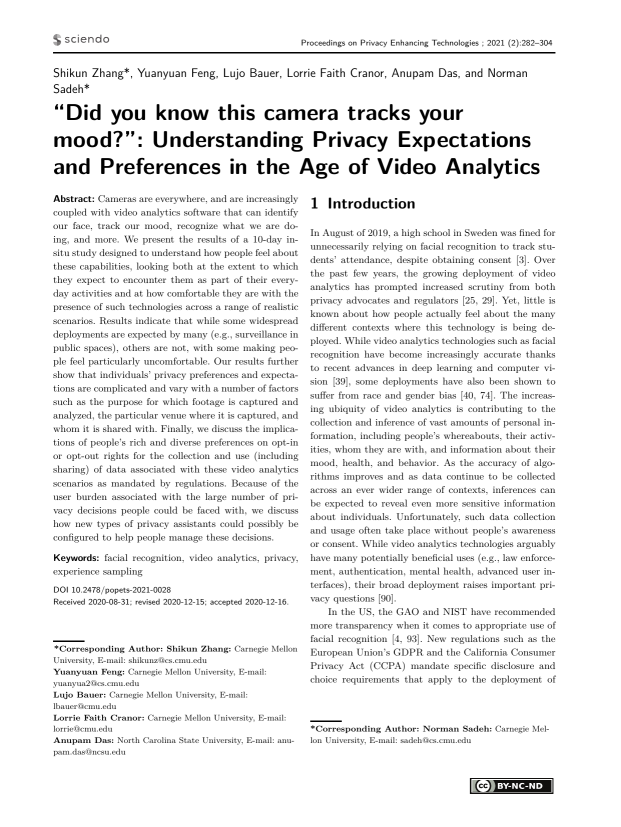“Did you know this camera tracks your mood?”: Understanding Privacy Expectations and Preferences in the Age of Video Analytics
Authors: Shikun Zhang (Carnegie Mellon University), Yuanyuan Feng (Carnegie Mellon University), Lujo Bauer (Carnegie Mellon University), Lorrie Faith Cranor (Carnegie Mellon University), Anupam Das (North Carolina State University), Norman Sadeh (Carnegie Mellon University)
Volume: 2021
Issue: 2
Pages: 282–304
DOI: https://doi.org/10.2478/popets-2021-0028
Abstract: Cameras are everywhere, and are increasingly coupled with video analytics software that can identify our face, track our mood, recognize what we are doing, and more. We present the results of a 10-day insitu study designed to understand how people feel about these capabilities, looking both at the extent to which they expect to encounter them as part of their everyday activities and at how comfortable they are with the presence of such technologies across a range of realistic scenarios. Results indicate that while some widespread deployments are expected by many (e.g., surveillance in public spaces), others are not, with some making people feel particularly uncomfortable. Our results further show that individuals’ privacy preferences and expectations are complicated and vary with a number of factors such as the purpose for which footage is captured and analyzed, the particular venue where it is captured, and whom it is shared with. Finally, we discuss the implications of people’s rich and diverse preferences on opt-in or opt-out rights for the collection and use (including sharing) of data associated with these video analytics scenarios as mandated by regulations. Because of the user burden associated with the large number of privacy decisions people could be faced with, we discuss how new types of privacy assistants could possibly be configured to help people manage these decisions.
Keywords: facial recognition, video analytics, privacy, experience sampling
Copyright in PoPETs articles are held by their authors. This article is published under a Creative Commons Attribution-NonCommercial-NoDerivs 3.0 license.

